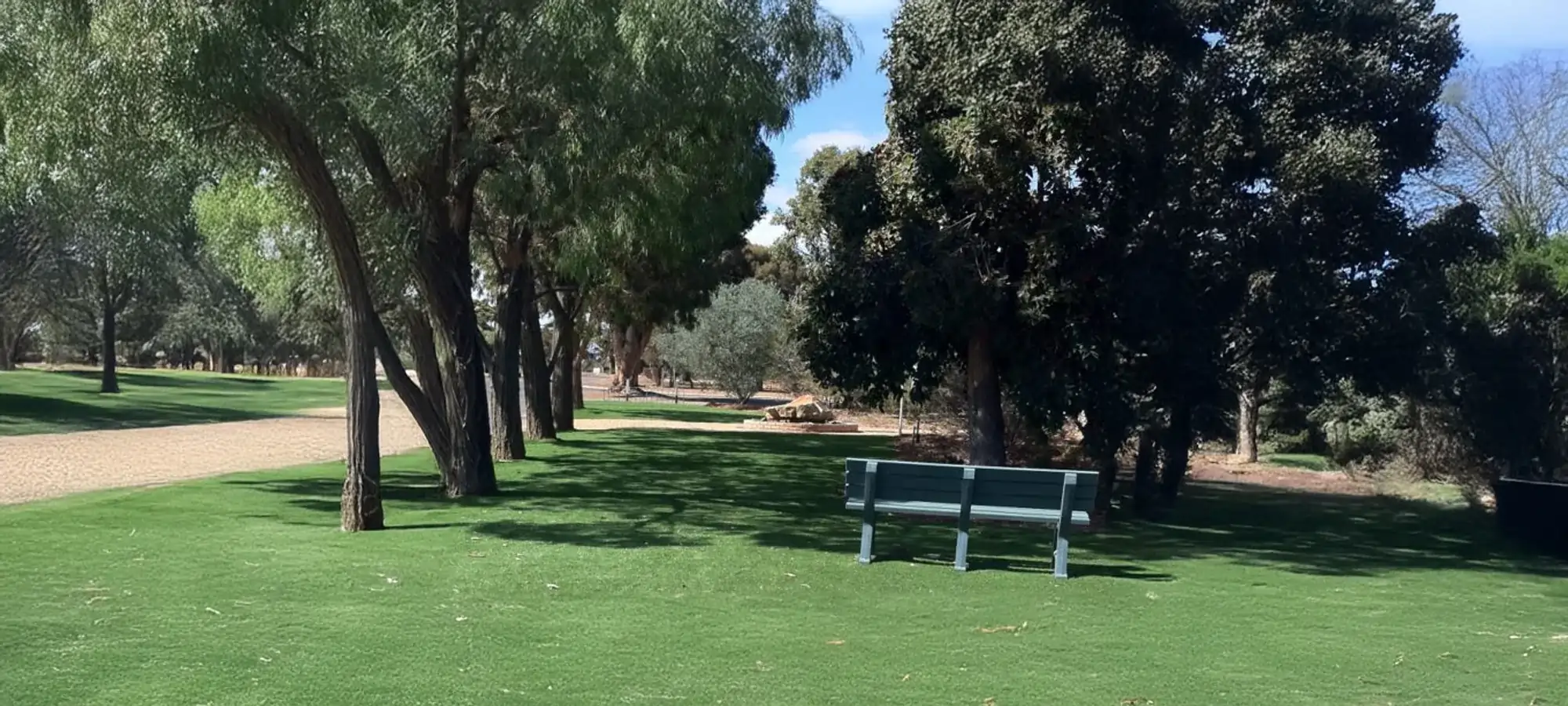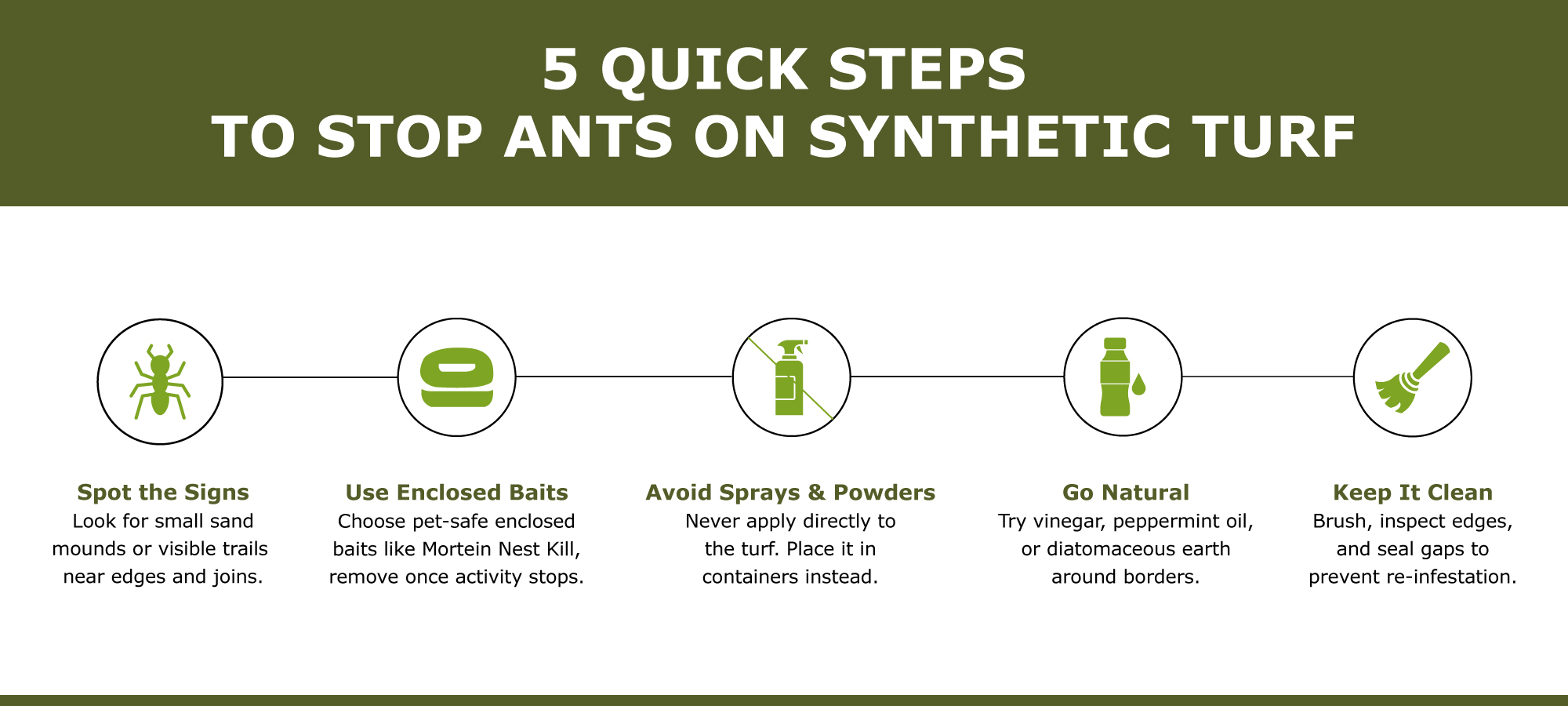How to Treat Ants on Synthetic Grass
How to Treat Ants on Synthetic Grass

Even the best-quality synthetic lawns can occasionally attract ants – especially in Perth’s hot, dry climate. While artificial grass doesn’t provide the organic matter ants normally nest in, they may still build small colonies underneath the surface base layer, especially if sand or decomposing material is present. Here’s how to safely and effectively control ants on your synthetic lawn without damaging the turf or harming pets.
1. Identify the Source of the Problem
Start by looking for tell-tale signs:
- Small mounds of loose sand or soil appearing in your turf seams or edges.
- Visible ant trails moving to and from specific areas.
- Activity near garden beds, paving joins, or reticulation edges.
Ants usually build nests under the base layer, not in the grass itself. Understanding this helps you target the colony rather than just treating visible ants.
2. Use Enclosed Ant Baits to Eliminate Nests
Products such as Mortein Nest Kill Ant Baits (or similar enclosed baits) are one of the safest and most effective ways to treat ants on artificial turf.
Why Enclosed Baits Work Best:
- They target the entire colony, not just individual ants.
- They’re less likely to damage the synthetic surface.
- They minimise exposure to pets and people.
Tip: Place baits near ant trails or mound entrances – not randomly across the lawn. Once ant activity ceases, remove the baits to prevent residue or moisture buildup.
3. Avoid Sprays, Powders, or Liquids on Turf
We don’t recommend using loose ant powders, sprays, or liquid insecticides directly on the grass. These can:
- Leave stains or residues on turf fibres.
- Interfere with drainage.
- Deteriorate adhesive seams.
If you prefer using liquid or powder treatments, place them in a small dish or container near the ant mound. This keeps the product contained and prevents it from affecting your synthetic surface.
Safety Tip: Ensure the container is secure and can’t be tipped over by pets, kids, or wind. Remove it promptly once treatment is complete.
4. Natural and Pet-Friendly Options
- Boiling water poured directly into the nest opening (avoid contact with turf).
- White vinegar and water spray along edges or cracks (test on a small patch first).
- Diatomaceous earth around perimeter pavers – it’s abrasive to ants but safe for pets.
- Peppermint or citrus oil sprays diluted with water – effective deterrents when applied near access points.
5. Prevent Ants from Returning
- Brush and clean the surface regularly to remove food debris or organic matter.
- Inspect joins and edges for sand accumulation or loose infill – ants love dry sand pockets.
- Seal perimeter gaps between turf and paving with a flexible outdoor sealant to block access.
- Control garden pests and aphids, which secrete sweet residues that attract ants.
Routine cleaning helps keep your turf hygienic and pest-free. See the Maintenance of Artificial Lawn guide on the Green Planet Grass website for more.

When to Seek Professional Help
If the infestation is large or persists despite your efforts, it might be time to call a licensed pest control specialist. Choose a provider experienced in treating synthetic surfaces – they’ll use safe, targeted products that won’t affect your turf base or drainage.
Conclusion
Ant infestations on synthetic lawns are uncommon, but when they occur, swift, careful treatment prevents long-term damage and keeps your outdoor space pristine.
For expert advice on maintaining and protecting your artificial lawn, contact Green Planet Grass today.
📞 Green Planet Grass – 0459 490 983
🌐 www.greenplanetgrass.com.au